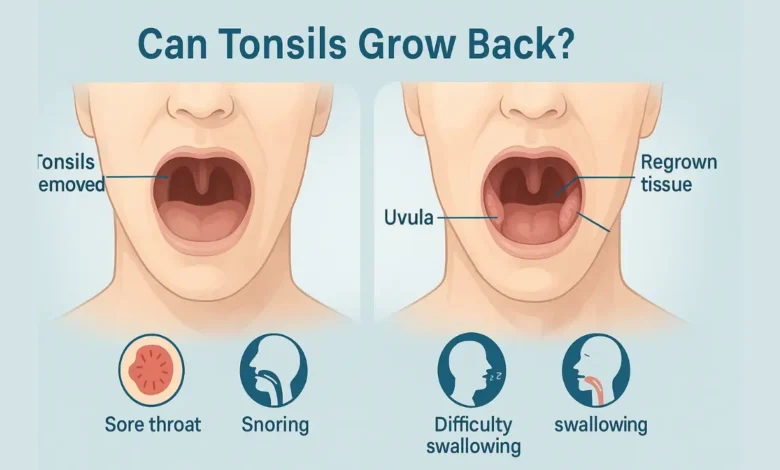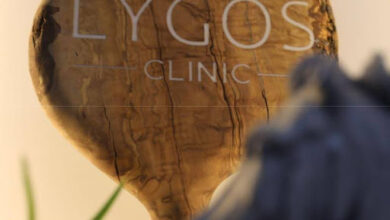Can Tonsils Grow Back? Understanding the Possibility and What It Means for Your Health

Tonsillectomy, or the surgical removal of tonsils, is one of the most common procedures performed around the world, especially in children who suffer from chronic tonsillitis, sleep apnea, or frequent throat infections. While many people assume that once the tonsils are removed, they are gone forever, there is an intriguing and sometimes confusing question that arises: can tonsils grow back? This article will delve into this subject in depth, explaining why regrowth occurs, highlighting key risk factors, and providing guidance for individuals who suspect their tonsils have regrown.
What Are Tonsils and Why Are They Removed?
Tonsils are small, oval-shaped clusters of lymphatic tissue located at the back of the throat. They serve as a component of the immune system that helps capture bacteria and viruses that enter through the mouth and nose. While they are helpful in children, tonsils can sometimes cause more harm than good when they become chronically infected or enlarged.
Doctors may recommend a tonsillectomy when:
- Tonsils cause repeated throat infections (chronic tonsillitis).
- Enlarged tonsils block breathing, leading to sleep apnea.
- Tonsils cause difficulty swallowing.
- Recurrent abscesses form around the tonsil area.
Most people experience permanent relief after removal, but the lingering question remains: can tonsils grow back?
Can Tonsils Grow Back After Surgery?
The short answer is yes, tonsils can grow back, but this outcome is rare. Tonsil regrowth happens when small pieces of tonsil tissue are left behind during surgery. Because tonsils are made up of lymphatic tissue, the remaining fragments have the potential to regenerate.
However, the regrowth is usually partial rather than complete. Instead of tonsils returning to their full original size, patients may notice small bumps or pieces of tissue at the back of the throat. In some cases, this regrown tissue can lead to recurring symptoms similar to those experienced before surgery.
Why Can Tonsils Grow Back?
There are several reasons why tonsils can grow back, and most of them depend on the surgical technique used:
- Partial Tonsillectomy (Tonsillotomy)
- In this method, only a portion of the tonsil tissue is removed. A thin layer of tissue is intentionally left behind to minimize pain, bleeding, and the need for recovery time. While this technique has benefits, it increases the chances that the tonsils may regrow.
- Incomplete Removal
- Even in a complete tonsillectomy, some tiny bits of tissue may remain. Over time, these can slowly regenerate, leading to noticeable regrowth.
- Childhood Surgeries
- Younger children are more likely to experience regrowth because their lymphatic tissues, including the tonsils, are more active and regenerative compared to those of adults.
How Common Is Tonsil Regrowth?
Studies suggest that about 5% of children who undergo partial tonsillectomy experience regrowth. While rare, adults may also experience it, sometimes decades later.
For example, in 2025, a case surfaced where a woman discovered her tonsils had grown back almost entirely 40 years after her original surgery. While extreme, this shows that the phenomenon is possible.
Overall, tonsil regrowth is uncommon, but it is not impossible—especially when the initial procedure leaves significant tissue behind.
Symptoms That Indicate Tonsils Might Have Grown Back
If you have had a tonsillectomy but are wondering if tonsils can grow back, you may want to pay attention to the following signs:
- A sore throat that feels similar to a pre-surgery infection.
- Visible tissue or bumps at the back of your throat.
- Recurring throat infections or strep throat.
- Difficulty swallowing due to obstructive tissue.
- Snoring or sleep apnea symptoms returning after surgery.
- Ear pain and bad breath are often linked to infected tonsil tissue.
These symptoms don’t always confirm tonsil regrowth, as other throat conditions—such as pharyngeal tissue swelling or keratosis pharyngis—can mimic similar signs. A thorough examination of the ear, sinus, and throat by a qualified professional (ENT) specialist is necessary for an accurate diagnosis.
Can Tonsils Grow Back Enough to Cause Problems?
In most cases, regrown tonsils remain small and cause no significant issues. However, for some individuals, especially children, regrown tissue can once again become enlarged and obstructive.
This can lead to:
- Sleep disturbances and apnea.
- Frequent infections.
- Difficulty eating or swallowing.
If regrowth interferes with quality of life, doctors may recommend a revision tonsillectomy, a second surgery.
What Increases the Risk of Tonsil Regrowth?
Research has identified several factors that make tonsil regrowth more likely:
- Young Age at Surgery – Children under 5 years old are at a higher risk of complications.
- Partial Tonsillectomy – Leaves behind more tissue than a complete removal.
- Frequent Infections After Surgery – Ongoing throat irritation may stimulate tissue regrowth.
- Genetics and Immune Response – Some people’s immune systems are more prone to tissue regeneration.
What Should You Do If You Think Your Tonsils Have Grown Back?
If you suspect tonsil regrowth, here are the steps you should take:
- Schedule an ENT Appointment
- An ENT doctor can visually inspect your throat and determine whether tissue regrowth has occurred.
- Monitor Symptoms
- Keep a record of recurring sore throats, sleep problems, or swallowing difficulties.
- Medical Management
- If infections occur, doctors may prescribe antibiotics or other medications to treat them.
- Consider Revision Surgery
- If regrown tonsils cause significant health problems, a second, complete removal may be the best solution.
Can Tonsils Regrow and Be Misdiagnosed as Something Else?
Yes, sometimes what appears to be tonsil regrowth is actually another condition. For example:
- Keratosis pharyngis – Small yellow or white keratin deposits in the throat.
- Lymphoid tissue growth – The body may produce other lymphatic tissue in the throat that resembles tonsils.
Both conditions can be mistaken for regrown tonsils, making professional evaluation necessary.
Can Tonsils Grow Back After Decades?
Interestingly, there have been rare reports of tonsils appearing to regrow even decades after surgery. While the growth is not always complete, it highlights the resilience of lymphatic tissue. These cases are exceptional, but they show that regrowth is possible even long after childhood surgeries.
Conclusion: Can Tonsils Grow Back?
So, can tonsils grow back? The answer is yes—but rarely. Tonsil regrowth is most common in children, especially after partial removal. While regrown tonsils usually remain small and harmless, they can sometimes cause symptoms such as throat infections, snoring, or difficulty swallowing.
You May Also Read: TheHealthyPrimates.org/: A Holistic Wellness Hub for Modern Entrepreneurs




